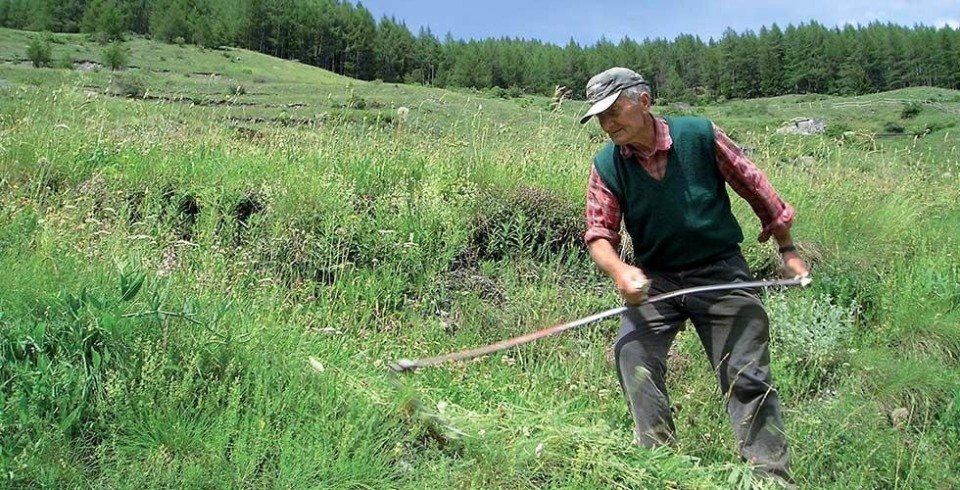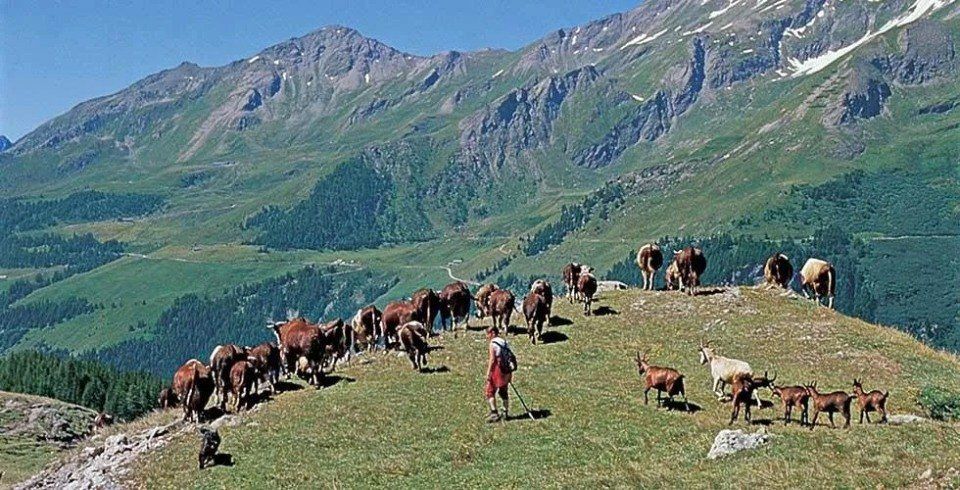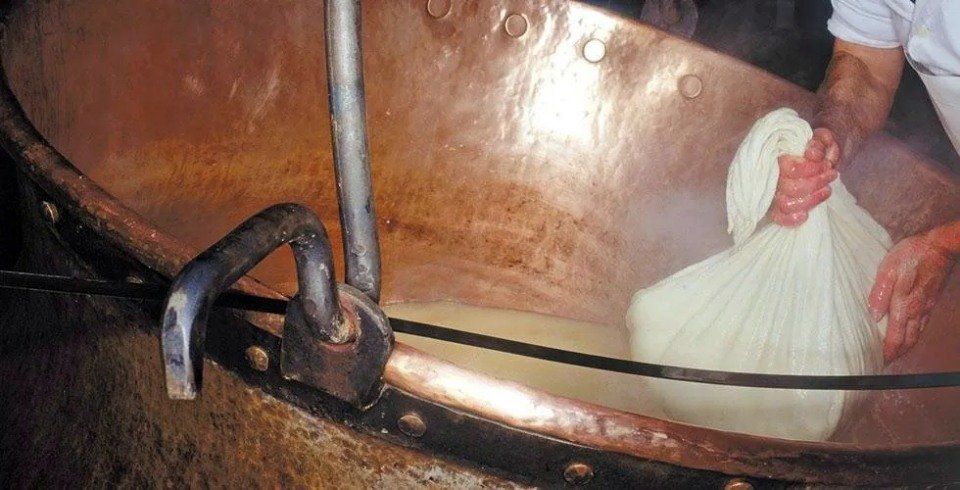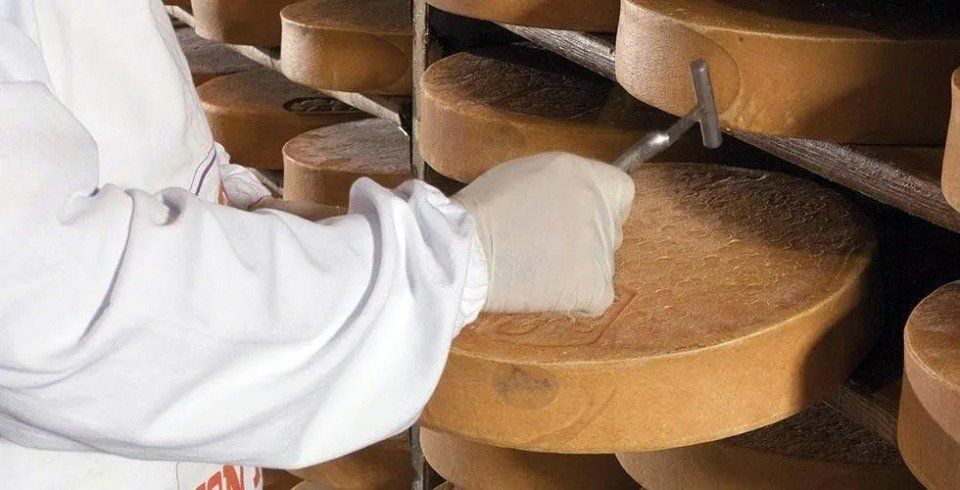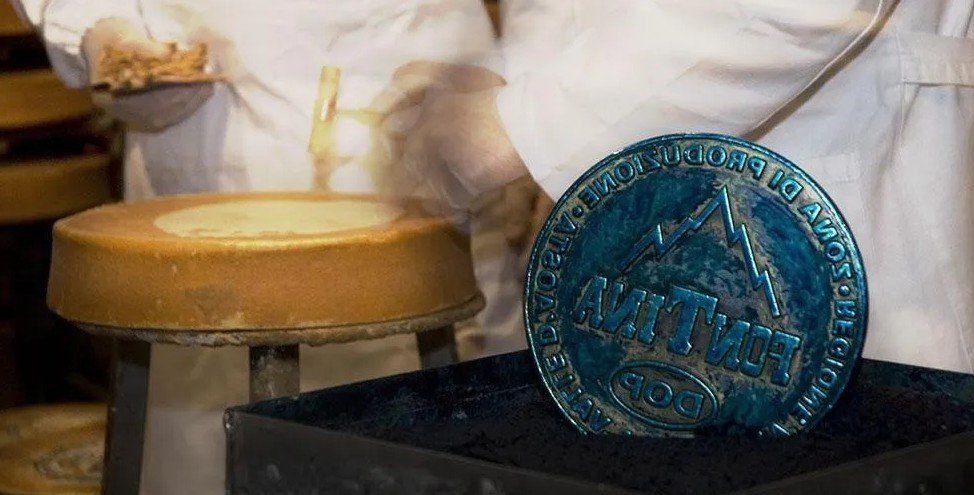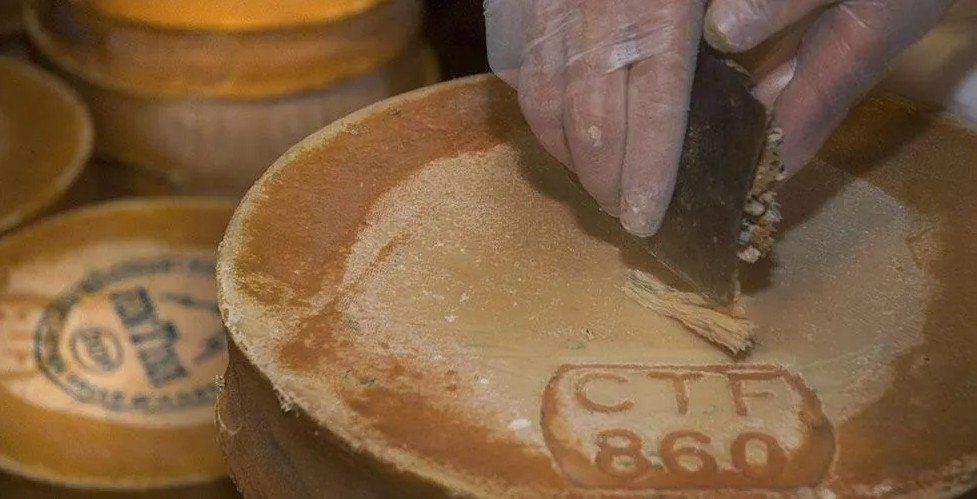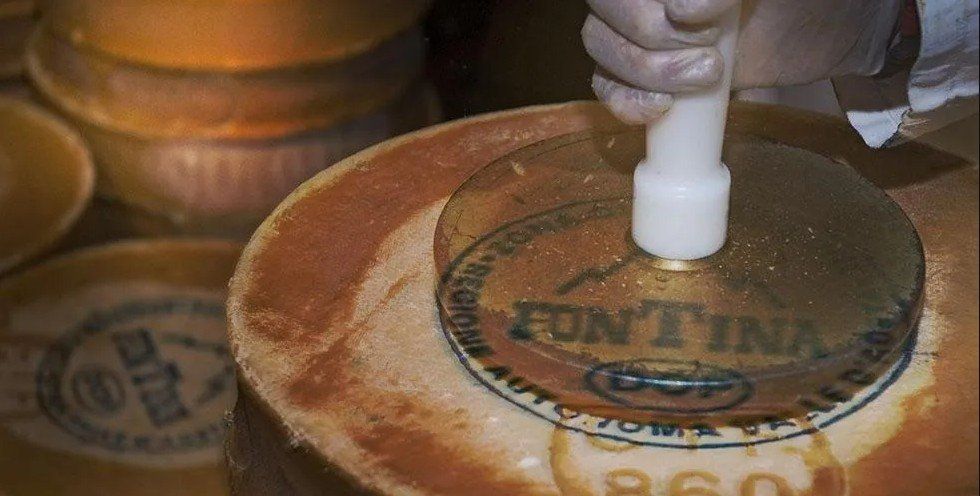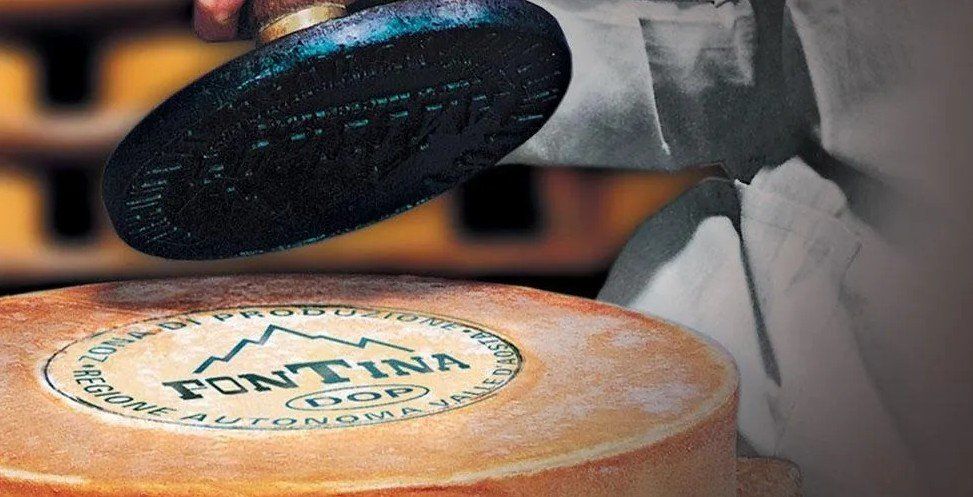PEOPLE
Our Fontina D.O.P. and local products are very important in the community of the Aosta Valley from both a socio-economic and cultural perspective; this cheese is a tradition, at the table and in the kitchen for other wonderful recipes, still quite deep-rooted today, and this not only the case in the rural world or for tourists.
The Aosta Valley locals have therefore been able to use the limited resources offered to them by an often hostile environment throughout history, learning to cattle breed species with very peculiar characteristics. From these animals, in addition to meat, we still obtain milk using a simple technique that turns it into cheese with unique characteristics; it is this uniqueness that protects the consumer through the brand (see art. 13 of the production policies) from the risk of mistaking Fontina D.O.P. with many other types of mountain cheeses. The maturation times, the temperature and the ageing conditions of Fontina D.O.P. are unique, giving this cheese a distinguished flavour, smell and texture.
FORAGE FARMING
Foraging and farming can take place in two locations: on the meadows in the valley, and high altitude pastures on the mountains. The meadows provide an ideal environment in spring and autumn, before mounting and after demontication, and normally mowed twice during the summer to build up hay reserves to be used during the long winter season.
In the mountain pastures the practice of extensive grazing is still very widespread according to the tradition whereby the shepherd watches over the herd often accompanied by a helper (either another shepherd or a dog). The animals can therefore graze, in a normal year, for even up to six months with considerable benefit to their well-being and consequently, the quality of our products.
BREEDING
There are two types of farms in the Aosta Valley: the stables on the valley floor and the mountain pastures. The are more than a thousand stables with cattle herd (around 40,000 heads, of which half are used for milk). There are over 150 mountain pastures scattered around the region, and the altitude of these range between 1,500 metres and the upper limit of the herbaceous vegetation. Every mountain pasture is made up of several stations (tramutes) in order to exploit the grassy rinds at increasing altitudes as the summer season progresses, and vice versa as autumn approaches.
TRANSFORMATION
The production of cheese from the milk in the peak periods of production (December-May) takes place in approximately 20 dairy corporations and a few private-owned dairies, with dozens of farmers who make cheese with their milk directly on the farm.
During the summer season, Fontina is produced directly on the mountain pastures; only a few of them give their milk to the dairies on the lower sections of the valley, opening also during the summer.
The cheese-making technique fully respects the original characteristics of the milk. The process starts with fresh raw milk, directly from the cow. without any refrigeration or heat treatments, respecting the traditional recipe. The milk does not undergo any intervention before it is transferred from the stable to the dairy. Upon arrival at its destination, the milk is still not subjected to synthetic practices such as the standardization of the fat content, acidity correction or the addition of chemicals. We work only with natural calf rennet and specific lactic ferments isolated in the Aosta Valley.
The production process of Fontina D.O.P. uses technology for exclusively physical actions that follow the coagulation: the breaking of the clot, pinning and semi-cooking of the curd (48°C), manual wrapping and shaping, pressing and turning.
In these conditions, it is essential to have fresh and raw produce, and this is directly linked to the professionalism and experience of our farmers.
SEASONING
The maximum relative humidity and constant temperature throughout the year of around 10°C in the caves dug into the mountain make it the perfect environment for the maturation of the cheese. Also, the shelves where cheeses are arranged are always made of spruce wood.
This ideal environment combined with our people's hard work through brushing (frottaggi) and placing techniques make a natural semi-permeable coating that helps control:
• The amount of salt in the paste, to enhance its flavour.
• The right balance of humidity levels in the cheese.
• The correct development of the biochemical processes that determine the cheese consistency and aroma.
• The microflora that prevents the cheese from rotting, mould and cracking.
No dyes or artificial components are used during the ageing process. The maturation stage of Fontina D.O.P. takes at least eighty days, to guarantee the healthy consumption of the product. This process ensures there are no health issues that could derive from the consumption of cheese obtained from raw milk. Recent scientific literature shows that the so-called health risks in semi-cooked and medium-aged cheeses obtained from raw milk (such as Fontina D.O.P.) are not superior to those made from pasteurized milk. Furthermore, the Cooperative and all its members, implement strict hygiene control plans to guarantee a perfectly healthy product, full of nutrients and with superior organoleptic characteristics.




